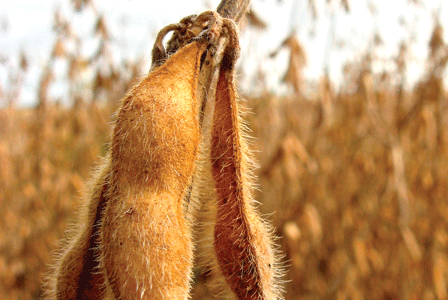
Is soy a good guy or a bad guy in a healthy diet and lifestyle? The confusion surrounding soy and soy products continues to grow.
Is soy a good guy or a bad guy in a healthy diet and lifestyle? The confusion surrounding soy and soy products continues to grow.
According to the Soyfoods Association of North America, soy food sales increased from $300 million in 1992 to nearly $4 billion in 2008. In Canada more than 700 products containing soy as an ingredient have been introduced in the past decade.
Amid this rapid growth in soy product choices, there have also been some rumblings about the safety of soy. There has been some concern that phytoestrogens may stimulate tumour growth in women prone to breast cancer. There have also been reports that infants given soy-based formula and males who consume soy could be affected negatively.
So how do you, the average consumer, cut your way through the half-truths to credible information about soy? First, you need to understand the complex nutritional powerhouse that is soy.
Soy nutrients
Soy is high in protein and healthy oils. It is also high in isoflavones, phytochemicals that are similar to estrogen. Isoflavones are produced by members of the legume plant family to fight pests or to deal with stress from environmental conditions such as weather, weeds, or lack of water.
Soy isoflavones are particularly rich in two phytoestrogens, genistin and diadzin, which are not true hormones. They mimic body estrogens, but in a very weak form.
Dr. Alison M. Duncan is a University of Guelph professor and human nutrition researcher. Her work focuses on the effects that functional foods, particularly soy, have on the incidence of chronic diseases such as heart and kidney disease, diabetes, breast cancer, and prostate cancer. She points out that estrogen in the body is 1,000 times more potent than the phytoestrogens found in soy.
Recent soy findings
In a recent study Dr. Duncan found that semen quality in young males was not affected by soy consumption. Also, eating soy actually helped reduce the risk of prostate cancer.
“Phytoestrogens help contribute to menopausal health. They help ward off osteoporosis,” says Dr. Duncan.
The news is equally promising for young women. According to a study conducted by Georgetown University Medical Center researcher Dr. Leena Hilakivi-Clarke, regular consumption of soy during childhood and early puberty gives women extra protection from breast cancer later in life.
Soy and infant formula
There has been debate over whether isoflavones in soy-based infant formulas can lead to hormonal problems. The concern is that they may act as endocrine disrupters (EDs), which are thought to speed up the onset of puberty in humans.
Pediatrician Dr. Cara Natterson, author of Dangerous or Safe? Which Foods, Medicines and Chemicals Really Put Your Kids at Risk (Hudson Street Press, 2009) writes that “while soy in-and-of itself has not been clearly scientifically linked with hormonal effects (and the hormonal concerns over soy are largely overplayed), the larger group of EDs has.”
According to Health Canada, breast milk is still the best choice for infant nutritional needs. The agency advises that soy formula should only be used for cases in which the infant is not able to tolerate milk-based products.
Soy in its healthiest forms
Dr. Natterson does voice concern over the large number of genetically modified soy products on the market. “Go organic when you can,” she advises.
Eating fermented soy in the form of miso soup or tempeh is also recommended by those who are convinced the benefits of soy outweigh its perceived downside. “[Fermentation] increases the bio-availability of isoflavones, meaning there are more health benefits. They’re more easily absorbed in the system,” says Dr. Alison Duncan.
Still, there can be too much of a good thing. Research is showing that soy isoflavones in their most purified form, usually taken as a natural alternative to hormone replacement therapy, may not be the best thing for women susceptible to breast cancer or for those being treated with tamoxifen.
A 2004 study conducted by the University of Illinois found that whole soy foods had more health benefits than did soy supplements, which are missing important biological components. The researchers recommended getting the most benefits by eating soy foods such as tofu, edamame, soy milk, or miso soup.
For now the best advice for the whole family is to enjoy soy in its more natural state as part of a healthy diet.
Soy helps breast cancer survivors
A new study just published in the Journal of the American Medical Association indicates that women who had breast cancer and a higher intake of soy food had a lower risk of death and breast cancer recurrence.
The results were evident among women with either estrogen-receptor-positive or -negative breast cancer and was present in both users and nonusers of tamoxifen (standard treatment for hormone-receptor-positive breast cancer).
The study authors concluded that “moderate soy food intake [results] is safe and potentially beneficial for women with breast cancer.”

